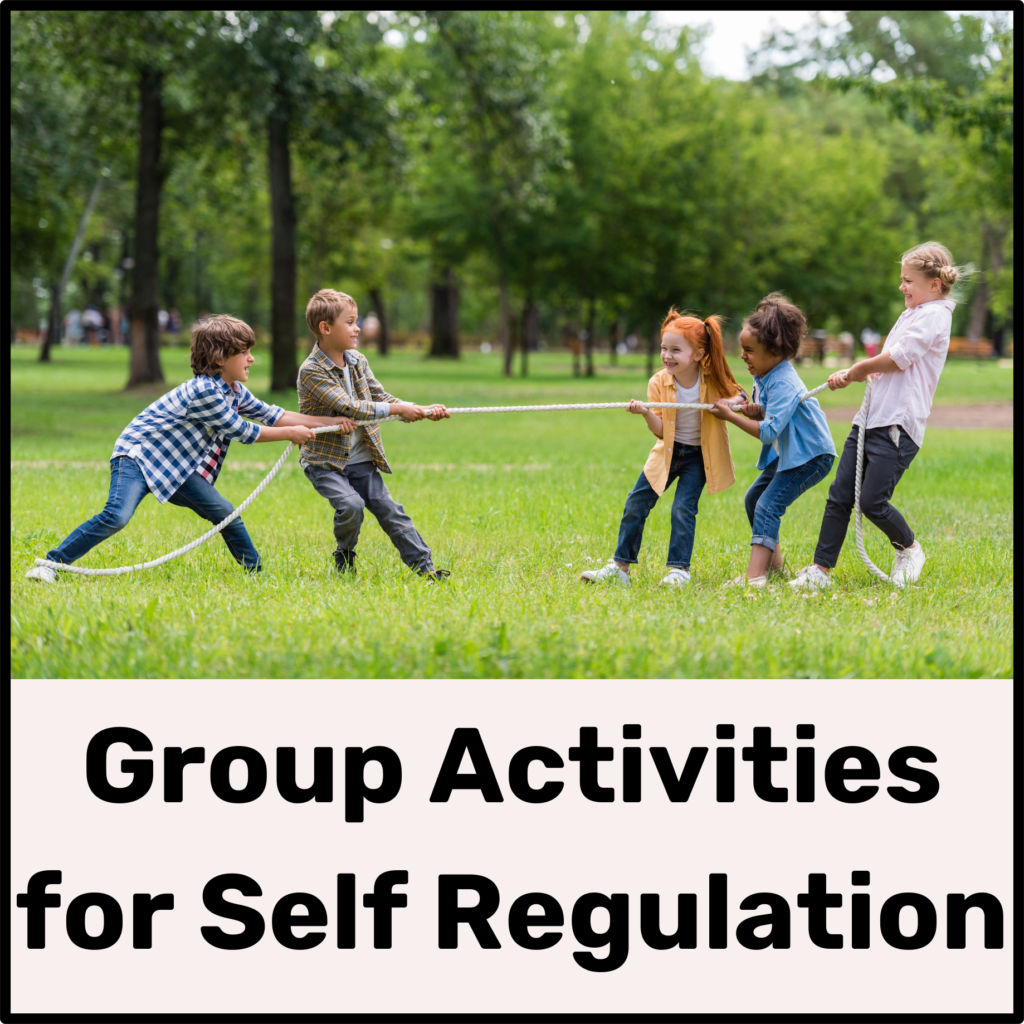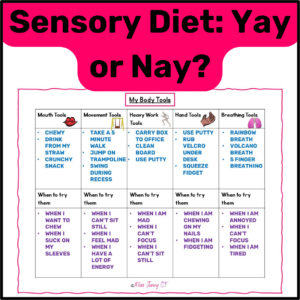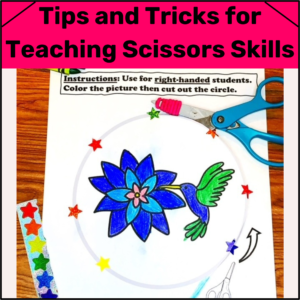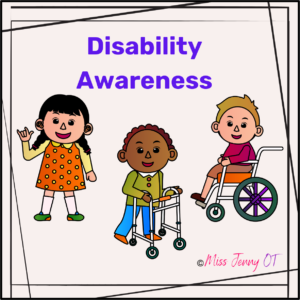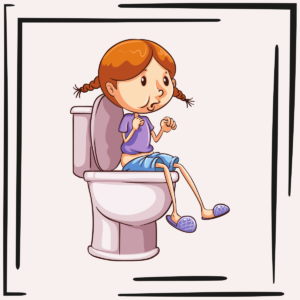Why use group activities for self regulation skills?
Using group activities for self regulation is very powerful. Working in a group of peers tends to increase engagement, provide opportunities to brainstorm ideas, and allow role-playing. Group members can show others the expectations for behavior during the activities through peer modeling. An opportunity to practice strategies arises if a student has difficulty while in the group.
Common self regulation curriculums
There are many curriculums that are used for teaching self regulation skills. We will focus on “The Zones of Regulation”, “The Alert Program”/”How Does Your Engine Run”, and “Interoception”.
The Zones of Regulation categorizes emotions into 4 “zones” and gives each zone a color. The “Red Zone” emotions are associated with overwhelm, and out of control behavior, including anger. The “Yellow Zone” emotions are associated with a heightened sense of arousal, but not out of control behavior. This zone includes frustration and anxiety. The “Green Zone” emotions are associated with being “Ready to Learn” and includes feeling calm, happy, and content. The “Blue Zone” emotions are associated with a lower state of arousal, including feeling bored, tired, and blah.
The “How Does Your Engine Run?” program (also known as the “Alert Program”) divides emotions into levels of arousal and compares them to a car’s engine. The three levels are “high”, “low”, and “just right”.
The Interoception curriculum focuses on teaching increased awareness of the body’s sensations and connecting them to emotions. This curriculum can be used as a precursor to the others. It teaches the underlying skills needed to learn how each “zone” or arousal level feels.
Setting up the group
- Decide what type of group you are going to run
- Consider the curriculum already in place
- Determine if the group has the underlying skills to learn the curriculum without modifications
- Consider focusing on interoception prior to introducing other SEL curriculums
- Determine how many students will be in the group
- Small groups (2-3 students) are best if their needs are greater (language and/or participation issues)
- Larger groups (4-8 students) can work if they are able to participate with minimal assistance
- Consider the type of group (homogeneous versus heterogeneous)
- Homogeneous groups might consist of kids the same age, with the same language and cognitive skills, and the same or similar diagnoses
- Heterogeneous groups might include kids of varying ages, language abilities, and diagnoses
- Gather materials and create schedules prior to beginning the group
- Each curriculum has its own materials that can be purchased, including books and workbooks
- Some teachers/therapists create materials based on the curriculum but with their group in mind. For example, kids that enjoy Pokemon may relate to a chart of the Zones of Regulation that uses Pokemon characters
- Decide if you will follow the suggested sequence from the formal curriculums or modify it for your students’ needs
Interoception group activities for self regulation
Interoception activities are designed to increase body awareness. Begin with external body parts then progress to internal. For example, one of the first activities to increase awareness is to practice noticing hand sensations while washing hands. Have the students notice when their hands are wet, dry, hot (due to water temperature), or cold. Do it with eyes closed if it is too easy. Be creative with the activities. Try some of these suggestions:
- Do a “car wash” or give dolls a “bath” in containers of soapy water. During the activity, have students notice how their hands feel.
- Pick up objects from bucket of ice cubes then notice if their hands feel hot or cold
- Play music and have them raise their hands when they notice you changed the volume (eyes closed)
- Sample different types of candy (with permission), such as Lemonheads, Red Hots, peppermint, and butterscotch, with eyes closed. Try to guess which one they are eating and notice how their mouths feel with each
- Lie quietly and try to feel their heart beating, then move around quickly. Stop and notice how their heartbeat has changed.
- Jump up and down or have a race, then notice how their breathing is. Sit quietly for at least a minute to notice how their breathing changes.
- Play tug of war and notice how their muscles, heartbeat, and breathing feel.
- Practice different breathing techniques and note where you notice it in your body (mouth, nose, belly, etc.)
- Do different movements or yoga poses. Notice how the muscles feel when doing a pose such as “downward dog”, or a crab walk
These are just a few ideas to get started. Have the kids suggest ideas of activities to try and body parts to notice. The idea is for kids to increase awareness of their body sensations in order to notice when they may need to use a strategy.
Introducing strategies during interoception groups
You can start introducing strategies once kids have improved body awareness. Help them link body sensations (such as tense muscles, fast heartbeat, feeling out of breath) to different emotions. Brainstorming as a group may elicit the best responses. Try strategies as a group then each student can write down which they do and don’t like. Create personalized charts or journals with their preferred strategies as well as when to use them. The chart should include how they will know to use them (for example, “I know I am frustrated when my heart rate increases, my muscles feel tense, and it is hard to think. This happens a lot in math class. I will take a deep breath and raise my hand to get help when I notice these body sensations”.)
Middle school and high school students may benefit from this activity. This PowerPoint presentation empowers them by teaching the basics of sensory processing and self regulation and includes in interactive workbook that can be used as journal.
More group activities for self regulation
The Zones of Regulation and the Alert Program (How Does Your Engine run?) also lend themselves to group activities. I recommend considering these curriculums after students are familiar with their body sensations (interoception). The reason I wait is that kids tend to be unsuccessful with these programs due to not identifying how each zone or alertness level feels. They do not know when they are in the “incorrect” (for the situation) zone/level, therefore cannot initiate using strategies.
Consider creating a framework where the SEL curriculum works with the interoception curriculum. I use a wall chart that I created (and sell) that shows how the 3 curriculums can intersect.

Students can use the chart to see typical body sensations they may feel in each category.
Merging the curriculums
Have the students engage in activities that may replicate the different categories. Encourage them to notice body sensations during the activities.
- For the “Blue Zone”/Low alert level
- Try doing the “Child’s pose” and notice their breathing and heart rate
- Listen to a meditation recording and notice how muscles feel
- Put heads down on desk with eyes closed and soft music playing
- For the “Green Zone”/Just Right level
- Play a seated game that they enjoy and notice how their attention is (how brain feels)
- Take turns choosing songs to listen to and focus on trying to figure out the words
- Do “Eye Spy” or “Where’s Waldo?” type activities
- For the “Yellow Zone”/Engine Revving level
- Play tug of war then notice how their breathing and heart rate is
- Have a dance party!
- Play musical chairs with younger kids
- Run outside for a few minutes then notice how their heart rate is and how their muscles feel
- For the “Red Zone”/High alert level
- Red light/Green light for younger kids
- Run a race, with emphasis on “exploding” from the start (do a short race to encourage them to go as fast as possible) then notice breathing
Building awareness
During all group activities, point out things that you notice about the students or yourself. During the dance party, you might say, “Wow, I am out of breath! I notice my breathing is like this when I am in the “Red Zone” (or when my engine is running high)” You can also point out, “I notice that your face is relaxed and your eyes are closed. This must be what you look like when you are in the “Blue Zone”.
Encourage group members to share what they notice about themselves. Brainstorm adjectives as needed to increase their vocabulary.
Use the natural environment to practice. Consider giving the students homework to do an activity and notice their sensations during the activity.
- During homework
- Before and after a shower
- While playing sports
- Before and during dinner
- At bedtime
Timeframe for group
There is no set time frame for running a group. Each setting will have different parameters such as how often the group can meet (may be once per week versus daily for example), and for how many minutes at a time. Where the group takes place will factor into the decision also. For most groups, 30 to 60 minute sessions are best. The duration of time to complete a group curriculum depends on the group makeup and how well they learn the lessons. Some students can take years to fully understand the concepts, while others are finished in 6-8 weeks.
Resources to consider
- I have a Free Teacher’s Guide to Teaching Interoception available HERE
- I created a 5-day curriculum as a starting point for teaching interoception that I sell HERE
- Visit the websites for each program
- Sign up for their emails to get updated resources
- Review guidelines for each program
- Purchase books or curriculum guides to understand the programs
- Attend continuing education courses
![]() Let me know if you have any questions!
Let me know if you have any questions!

